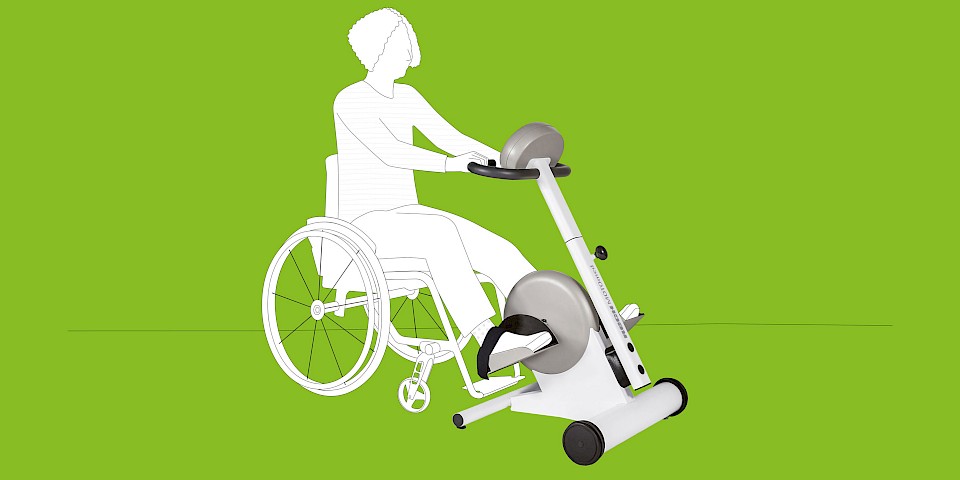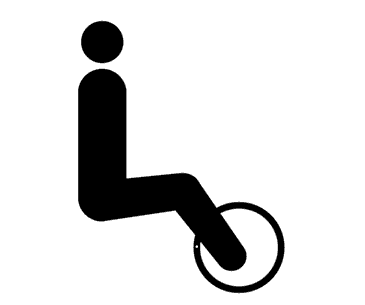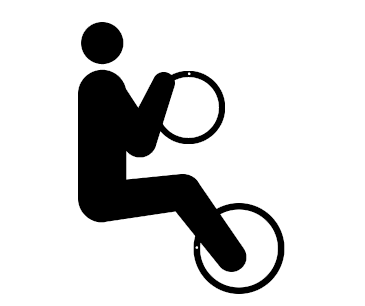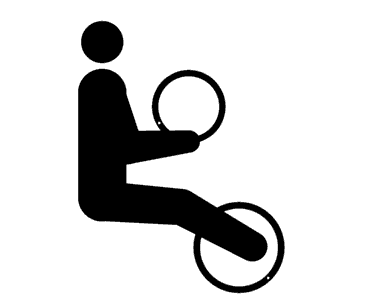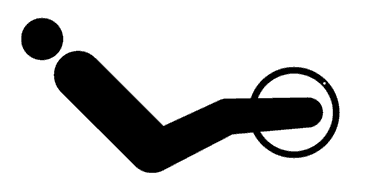To see the own legs in motion (even though passively) gives back hope to the patients on intensive care unit and motivates them to engage in their rehabilitation program in the best possible way .
Paraplegia
Recovering residual muscle strength, loosening spasm
The movement therapy device MOTOmed enables paraplegia patients with restricted mobility a motor-driven and motor-assisted leg and/or arm training from a wheelchair.
The special smooth drive system and the spasm detection help to reduce muscle tone and spasms significantly. Through the function “ServoCycling” patients with incomplete paralysis are able to recover, maintain and establish residual muscle strength. In addition, the passive MOTOmed movement may loosen the muscles, stimulate joint flexibility and activate the circulatory system as well as the metabolism.
Functional Electric Stimulation (FES)
MOTOmed movement therapy with incomplete paraplegia
In combination with FES, paraplegic patients even with complete paralysis can actively train with the MOTOmed device. Little self-adhesive electrodes activate arms or legs by giving electric impulses. “Real” muscle contractions take place and a further muscle loss is avoided.
MOTOmed movement therapy on a regular basis enables paraplegic patients an effective cardio-vascular training.
Configure your personal MOTOmed
Use the MOTOmed Product Configurator to configure your MOTOmed according to your requirements. Quickly, easily and without obligation. Try it out and configure your personal and individualized MOTOmed now.
MOTOmed Movement Therapy
MOTOmed Movement Therapy was developed for people with movement restrictions and complements physical, ergo and sports therapy measures. Users can train while seated in a wheelchair or from a chair. Patients in supine position use MOTOmed from a nursing bed or therapy couch.
In Germany, the device-based movement therapy with the MOTOmed is recognized as an aid for many indications by the statutory health insurance. It is worthwhile to inform yourself!
Therapy modes
passive
The effortless motor driven movement is ideal for the regulation of muscle tone, loosening stiff muscles and for early mobilization after long rests. Passive training stimulates blood circulation, digestion and joint flexibility.
assistive
In motor-supported movement therapy, the function MOTOmed ServoCycling enables easy transition from passive to active training. A motor-supported movement stimulates strength and endurance even with minimal muscle strength.
active
An active training with own muscle power against finely adjustable resistance levels strengthens leg, arm and upper body muscles and stimulates the cardio-vascular system.
Achieving best therapy goals through interval training
Alternating phases of strain and recreation (intervals) through active and passive training give a higher training stimulus which leads to a better therapy success.
Therapeutic goals
- Reducing the consequences of lack of exercise
- Reduce spasticity
- Activate residual muscle forces
- Counteract fatigue
- Strengthening the psyche and well-being
Videos
Study concerning the application of (passive) MOTOmed movement therapy in patietns with spinal cord injury
12.2) Kuhn D., Leichtfried V., Schobersberger W., Röhl K. (2013). FES-Cycling bei Menschen mit Querschnittlähmung – Auswirkungen auf subjektives Empfinden und Aktivitäten des täglichen Lebens. Physioscience, 9(4), 142-150., DOI: 10.1055/s-0033-1355939
12.1) Muraki S., Ehara Y., Yamasaki M. (2000). Cardiovascular responses at the onset of passive leg cycle exercise in paraplegics with spinal cord injury. European Journal of Applied Physiology, 81(4), 271-274., DOI: 10.1007/s004210050042






